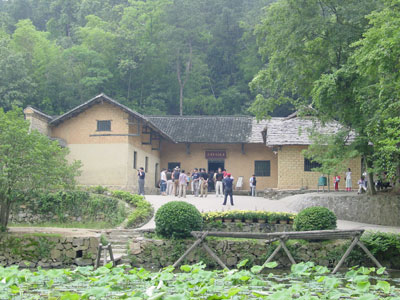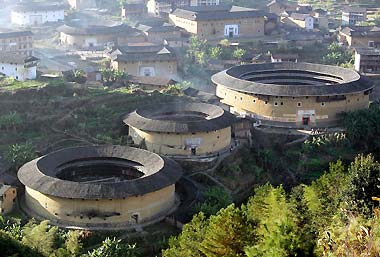
Photo by Barbara Koh/New York Times
From China’s Fujian coast, it’s a grinding drive up narrow roads through villages built around exhausted coal mines to reach the remote mountains of Yongding. Morning mist clings to the slopes of dense trees and brush. Below, in a valley, rests an eerie collection of beige cylindrical structures, one as enormous as a football field. This sci-fi scenery is peculiar to southern China and concentrated in Yongding County. The bizarre edifices, which the Chinese say foreign surveillance has, over the years, mistaken for missile silos and U.F.O.’s, are decades- and centuries-old and made of rammed earth. They are still homes to the Hakka, a Han Chinese nomadic group.




